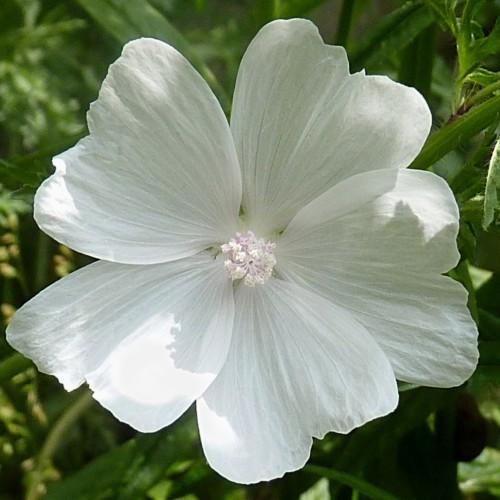
musk mallow
Malva moschata f. alba
Cycle:
Herbaceous Perennial
Watering:
Average
Hardiness Zone:
3 - 8
Flowers:
Flowers
Sun:
Full sun
Leaf:
Yes
Growth Rate:
Low
Maintenance:
Moderate
Drought Tolerant:
Yes
Salt Tolerant:
Yes
watering
Musk Mallow (Malva moschata f. alba) needs regular, consistent watering to thrive. Water your Musk Mallow deeply approximately once a week when the plant is actively growing, and every 2 weeks or less during dormant periods. Be sure to avoid overwatering, as this can lead to root rot. Monitor your plant's soil moisture levels and adjust your watering schedule when necessary. In periods of intense summer heat or drought, water more frequently.
sunlight
Musk mallow plants prefer a sunny location with 6 to 8 hours of sunlight per day for optimum growth. Morning hours are best as the sun is weaker in the afternoon, and the mallow’s leaves can burn. In hotter climates, afternoon shade may be beneficial to protect the musk mallow even though the plant does well in warmer weather. During the summer months, a few hours of shade to protect the musk mallow from the intense afternoon sun is beneficial. In winter, the musk mallow benefits from a few hours of morning sun, but direct afternoon sun can be too cold.
pruning
Musk mallow (Malva moschata f. alba) should be pruned twice a year - once in early spring (March or April) and again in late summer (August). Early spring pruning should be done after the last frost, which usually occurs between March and April. This will remove damaged and diseased branches, encourage healthy growth, and promote blooming of the flowers in the summer months. Late summer pruning should be done in mid-to-late August, around the time that the flowers are fading. Deadheading the faded blooms and removing any unwanted and crowded branches can help to encourage a more abundant flowering display the following year. When pruning, cut back the stems to a healthy set of leaves and avoid cutting all the way back to the main stem. This will ensure that the plant gets enough sunlight and water in order to thrive. Be sure to dispose of any cuttings promptly to avoid disease from spreading.
